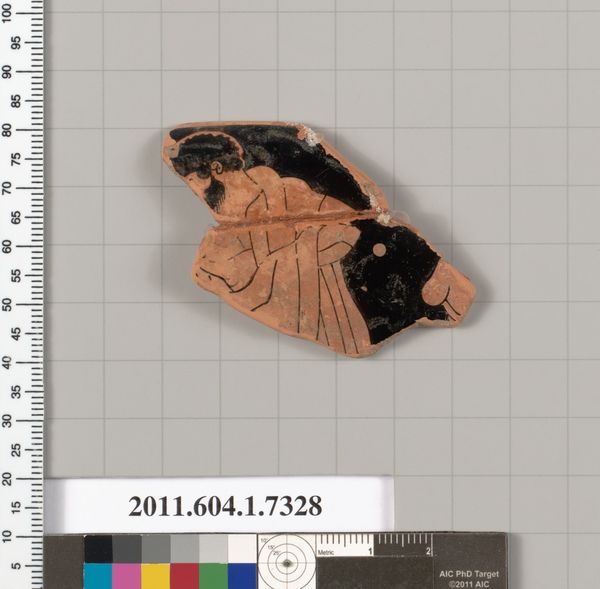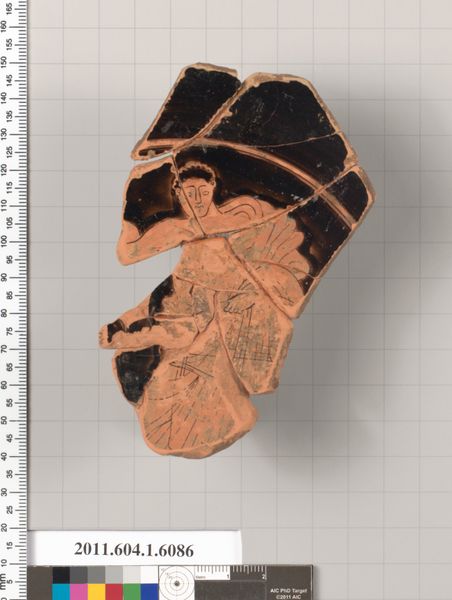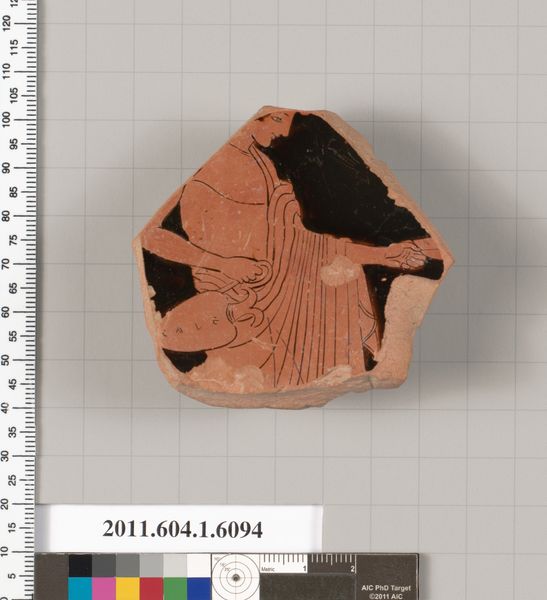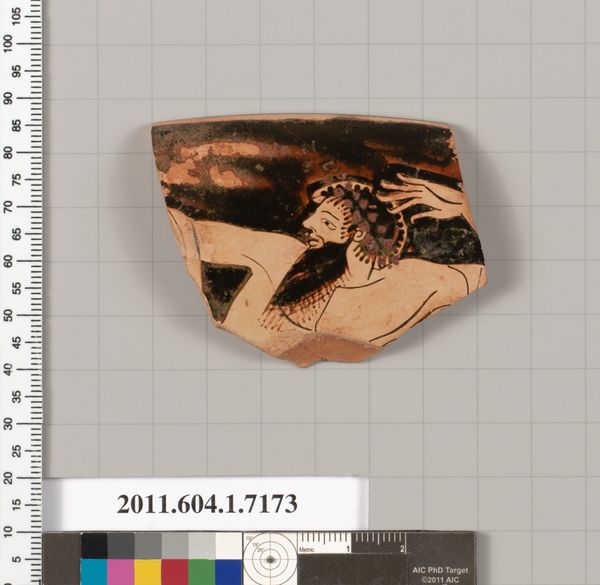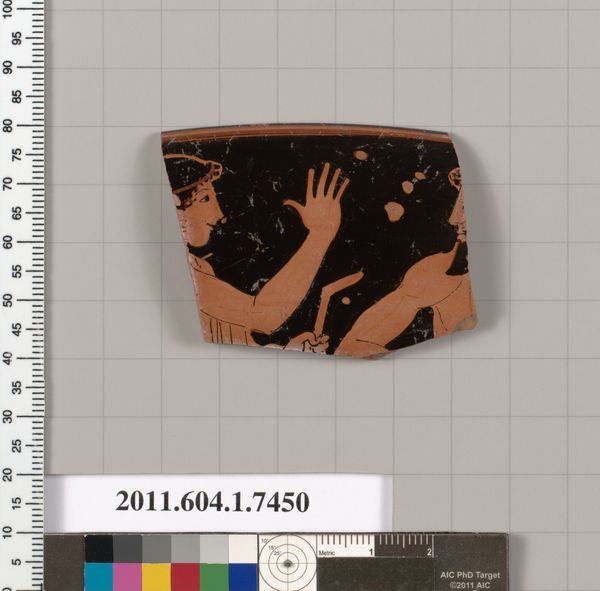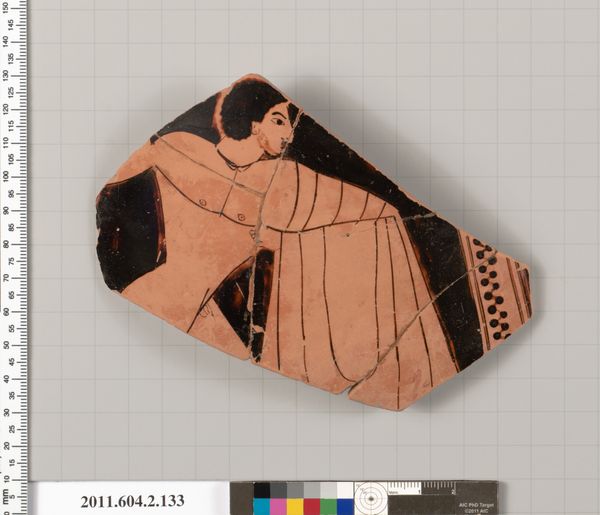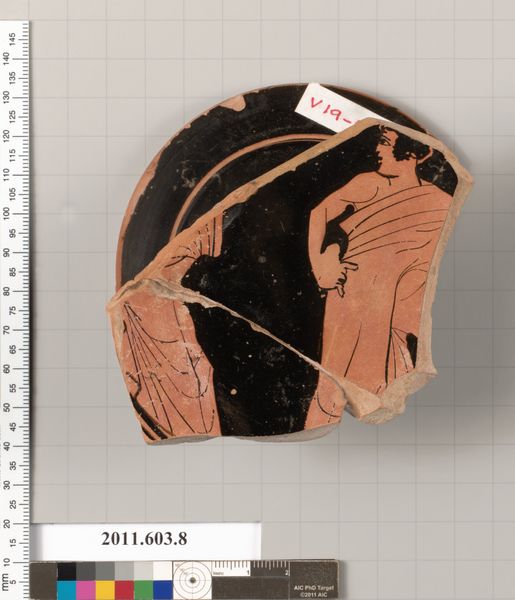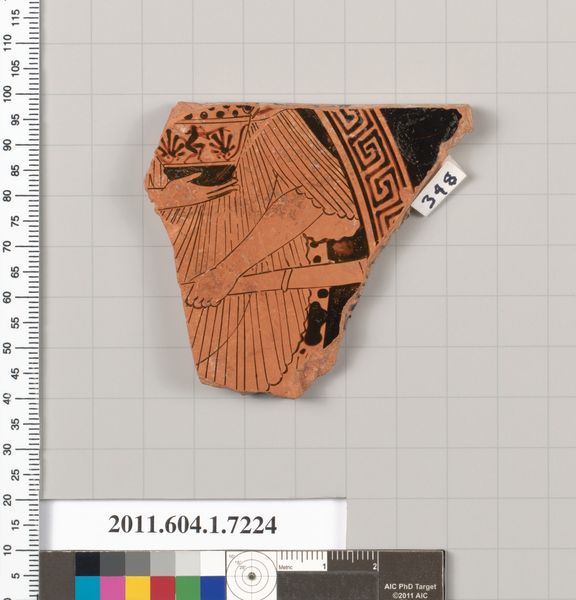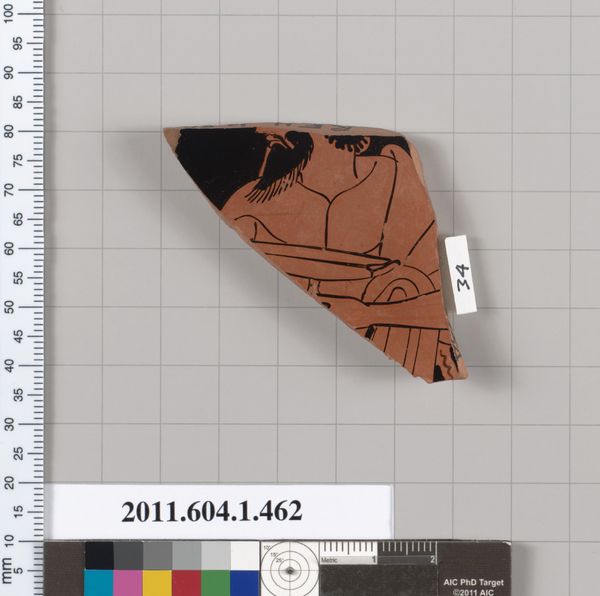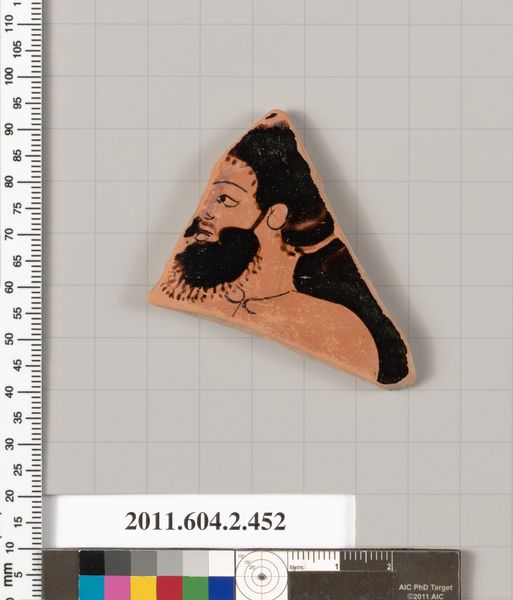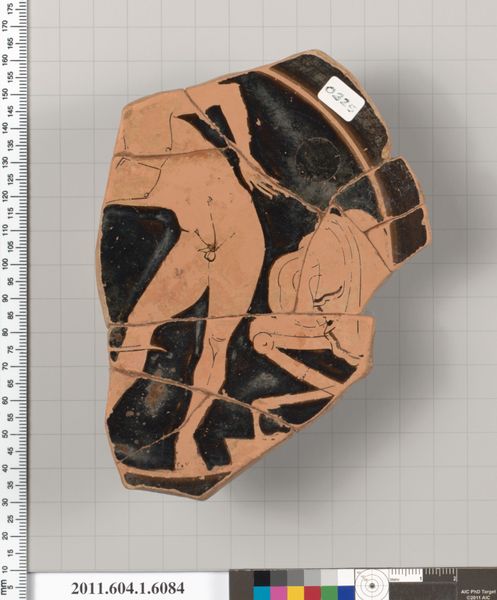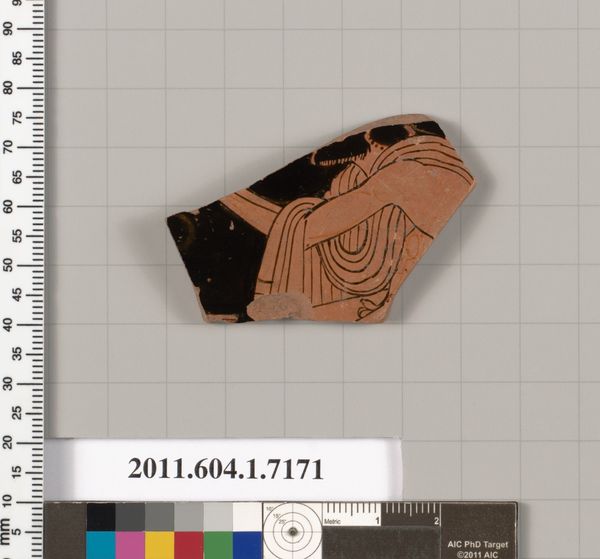
ceramic
#
greek-and-roman-art
#
ceramic
#
vase
#
figuration
#
roman-art
#
ancient-mediterranean
#
arch
Copyright: Public Domain
Curator: This terracotta fragment of a kylix, or drinking cup, dating back to 530 BC, really captures a moment of everyday life in ancient Greece, even in its fractured state. Made by Makron, it's fascinating how utilitarian objects can become canvases. Editor: I'm drawn to the physicality of the fragment itself. You can see the mark making from its production, yet it represents this classical idea of an idealized man, what interests you most in the fragment? Curator: Well, considering it through a materialist lens, it’s the process of its making. How did the artisans access their clay? Was this clay widely used, or locally specific? I'm very interested in this object as something consumed by an average person – this cup likely saw use at a symposium, part of someone's daily routine of leisure and perhaps even social climbing. Does this perspective influence how you engage with the object? Editor: That’s a different view of the work than I originally held. You make me think of the cup as a form of social object or everyday technological device of the time – where we engage with social and economic forces. Curator: Exactly! Considering the vessel as both art and artifact gives us access to how value and labour operated within the larger societal context. And consider the person creating it: what skill and work ethic did they have? How valued was the job of forming the cups that were likely eventually discarded as the cheap labor was considered low value? Editor: Thinking about it now, it's amazing to consider something both commonplace and culturally precious at the same time, now I see its meaning with much richer layers. Curator: It's all about finding these connections between process, consumption, and the story this humble fragment can tell us.
Comments
No comments
Be the first to comment and join the conversation on the ultimate creative platform.
